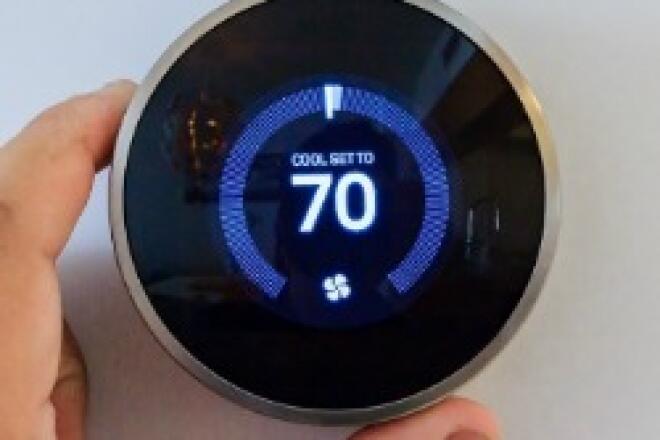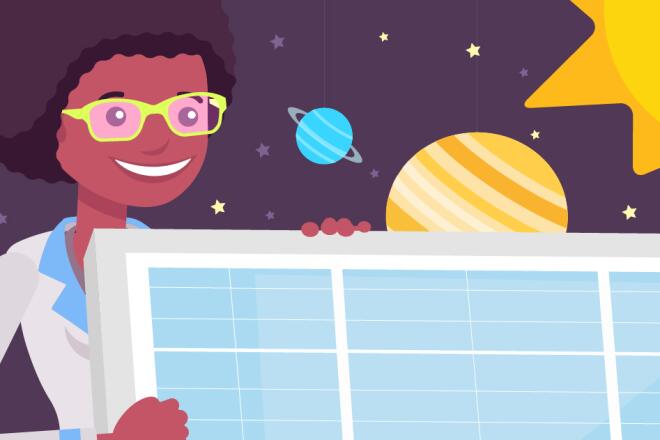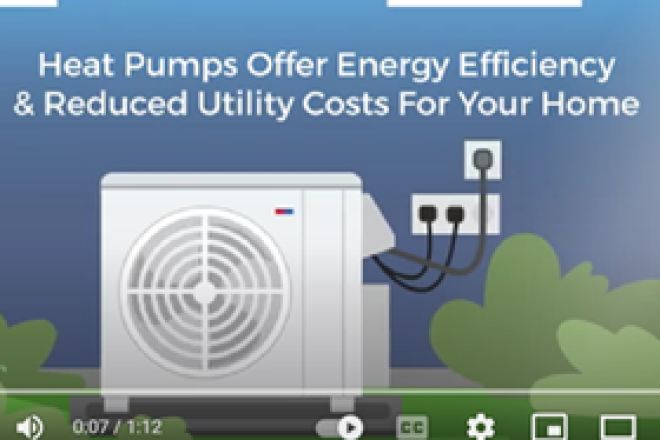
3 Steps for Understanding How Solar Works
This guest blog post was contributed by EnergySage.
Solar panels are popping up everywhere: the U.S. surpassed two million residential solar installations in 2019, meaning you’ve likely seen a roof or a field covered in panels where you live. When you walk or drive past those installations, you may wonder how the solar panels produce electricity, how much power they can actually provide and how it translates into savings.
Here’s what you need to know about how solar works:
Step 1: Solar panels convert sunlight into electricity
The first step to creating electricity from the sun occurs in solar panels. Solar panels are composed of a pattern of silicon cells underneath a glass sheet. When sunlight hits a solar panel, it interacts with the silicon cell, causing electrons to begin to move around. To harness this energy, the cells are fitted with wires that capture the electrical current created by this movement.
Each panel typically has 60 or 72 of these solar cells, meaning a single panel can then aggregate the electrical current produced from each of these cells into a single flow of electricity. For a sense of scale, solar panels weigh only around 30 pounds each and are generally five feet long and three feet across, making them about just as wide as and a foot shorter than a twin mattress.
Each of these solar panels will generate enough electricity over the course of a year to power five LED light bulbs around the clock for an entire year. Most homes that install solar panel systems will put anywhere from 15 to 30 panels on their roof. The power generated from all of these panels together adds up fast: 20 panels alone is enough to power an entire average American home for an entire year in sunny parts of the country.
Step 2: Inverters convert DC electricity into usable AC electricity
The electricity that comes out of outlets in your home to power your devices is alternating current (or AC) energy. However, as is the case with all power plants, the electricity generated by solar panels is in a different format: direct current (or DC) energy. In order to make this electricity usable in your home, solar panels are paired with the aptly-named solar inverters, which convert the DC energy from solar panels into usable AC energy for your home. Whereas solar panels passively lie on rooftops collecting sunlight, inverters are a more active component of solar energy systems with complex power engineering and technical designs.
Solar inverters can either collect all of the electricity from your panels and invert it all at once (known as a central or string inverter), or invert the electricity produced by each individual panel (known as microinverters). This means that inverters range in size from about twice the size of a smartphone that can fit in your hand (microinverter, of which you need one for each panel) to a small radiator that is hung on your wall (string inverter, of which you need just one).
Step 3: Storing solar power in the grid or at your home
One of the most frequently asked questions about solar is: how do I power my home at night or on cloudy days when the sun isn’t shining? The short answer: by storing that energy for use later.
Most states in the country have net metering policies in place to encourage solar adoption. The way these policies work is that when your solar panels are producing more electricity than your home needs (like during the day when you’re at work), you send that electricity to the grid where it’s used right away, and your electricity meter runs backwards. At night or when you are using more electricity than your panels are producing, you pull that electricity back from the grid, moving your meter forward.
You are billed by your utility for the net of what you pulled from the grid versus what you put onto it; hence, net metering. In this way, although all of the electricity coming from your solar panels isn’t directly powering your home, it can offset all of your electricity needs by storing that solar electricity as credits for future use from the grid.
Alternatively, instead of sending unused solar electricity to the grid, you can store that solar energy directly at your home in a solar battery. Solar batteries, which are typically between the size of a medium radiator and a small wardrobe, are increasingly popular as an alternative to backup generators in areas impacted by frequent storms or outages since they don’t require fuel or any effort to turn on. Solar batteries allow you to store any excess solar generation from your panels to continue to power your home directly with the sun, even after it’s set for the day. This ensures that you are directly powering your home with as much solar-generated electricity as possible. Some states and utilities offer incentives for buying a battery.
See if you can save money by installing solar
The costs of solar equipment – from panels to inverters to batteries – has dropped significantly over the last decade, making it more possible than ever to power your home with the sun. By installing solar on your property, you can lock in what you pay for electricity for the next 25 years or more. There are also many online tools to help you assess whether solar is right for you and your home – from Google’s Project Sunroof to EnergySage’s Solar Calculator.
Want to learn more about renewable energy and the many benefits it can deliver? Check out our guidebook and video here.



